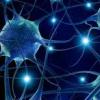I've been reading a bit lately about fear extinction, and there are some interesting new research and theories emerging. Contrary to what we may think , the process of fear extinction doesn't involve erasing the fear memory network ( or loosening its connections ) in the amygdala, but creating a new memory network ( in the amygdala) where the memory of that event is now encoded as "safe" or non-threatening. This new memory network inhibits the older one, but the latter still persists.
Unfortunately, it seems that the process of extinction is often linked to the context in which it happened, unlike the original fear memory. In other words, if you got some fearful event involving , say, a spider while sitting under a tree in a forest, the fear will trigger also if you encounter a spider in your living room next to your laptop. Context won't matter.
On the other hand , if you get a process of extinction involving spiders in your therapist office, the context in hard-linked to the spider. You won't fear spiders when you're in a place that looks like your therapists office, but the fear might trigger if you encounter the spider in another context, like in an old attic while dusting a book.
There's a lot of research presently trying to find ways to make the fear extinction process independant from the context.
It would be interesting if some of the people here that experimented with vorinostat could report whether exposure to the same fear in a different context ( than the one they've been in after dosing) reappears or not.
Meanwhile, these articles are definitely worth reading and could give some more clues on how to use vorinostat efficiently.
I don't know if Strangelove is still selling it, I might give it a try myself ( I have a long history of battling anxiety )
At the same time, however, this endeavor has been hampered by misconceptions as to the nature and significance of extinction, which is sometimes characterized as a process of “forgetting” or “unlearning” (implying that the loss of a CR may simply reflect the reversal of the plasticity associated with acquisition) rather than a new learning process accompanied by additional plasticity (e.g., Kitazawa, 2002)
In response to findings such as these, an alternative class of theories was developed that proposes that extinction is a form of new learning that counteracts the expression of the CR Bouton 1993, Konorski 1948, Pavlov 1927, Wagner 1981. In colloquial terms, these “inhibitory” theories suggest that extinction is characterized by the development of a new connection between the CS and US representations that effectively says “now, in this place, the CS no longer predicts shock.” In associative terms, this process is described as the generation and strengthening of a second, inhibitory association between the CS and US representations, which acts in parallel with the excitatory association and directly opposes the tendency of the excitatory association to activate the US representation.
it seems likely that extinction involves a strengthening of connections between those same sensory pathways and a separate, GABAergic population of neurons that acts to inhibit the CR.
From :
"Behavioral and Neural Analysis of Extinction" https://www.scienced...896627302010644
Curiously, however, extinction produces a relatively transient suppression of fear; conditioned fear responses return under a variety of conditions including after the mere passage of time (i.e., spontaneous recovery) or if the extinguished CS is presented outside the extinction context (e.g., renewal) (Bouton, 1993). This suggests that memories of both fear conditioning and extinction are encoded in the amygdala, and contextual retrieval cues determine which memory is expressed in behavior.
These phenomena indicate that extinction does not erase the conditioning memory, rather it causes new learning about the CS. Indeed, it appears that extinction training yields a new “safety” memory that inhibits retrieval of the fear memory.
Unlike fear memory, the expression of this safety memory is limited by context and time (Bouton, 1993)
From "Seeking a Spotless Mind: Extinction, Deconsolidation, and Erasure of Fear Memory". https://www.scienced...896627311003904
Return of extinguished behavior is common following the passage of time (“spontaneous recovery”), when extinguished cues are encountered outside the extinction context (“contextual renewal”), and after presentation of the unconditioned stimulus (“reinstatement”). These effects provide support for the widely held view that extinction is a new form of learning and that conditioning and extinction memories may coexist in distinct neural circuits and be reactivated independently based on environmental or situational factors.
Fear extinction may reduce emotional elements, while leaving other associations (e.g., sensory) intact.
It is widely recognized that whatever is learned in extinction is more fragile than the original associations trained through CS-US conditioning, as evidenced by findings that the acquisition CR returns in a variety of situations. This apparent inability to abolish the memory of a conditioning experience may be adaptive: in nature, signals for danger may rarely coincide with actual threat. On the occasion when threat does exist, however, a rapid defensive response could promote survival. From this perspective, the fragility and transience of extinction seems appropriately balanced against the strength and persistence of conditioning.
From : "Rethinking Extinction " https://www.scienced...89662731500817X
Edited by BlueCloud, 03 October 2018 - 06:52 PM.

























































